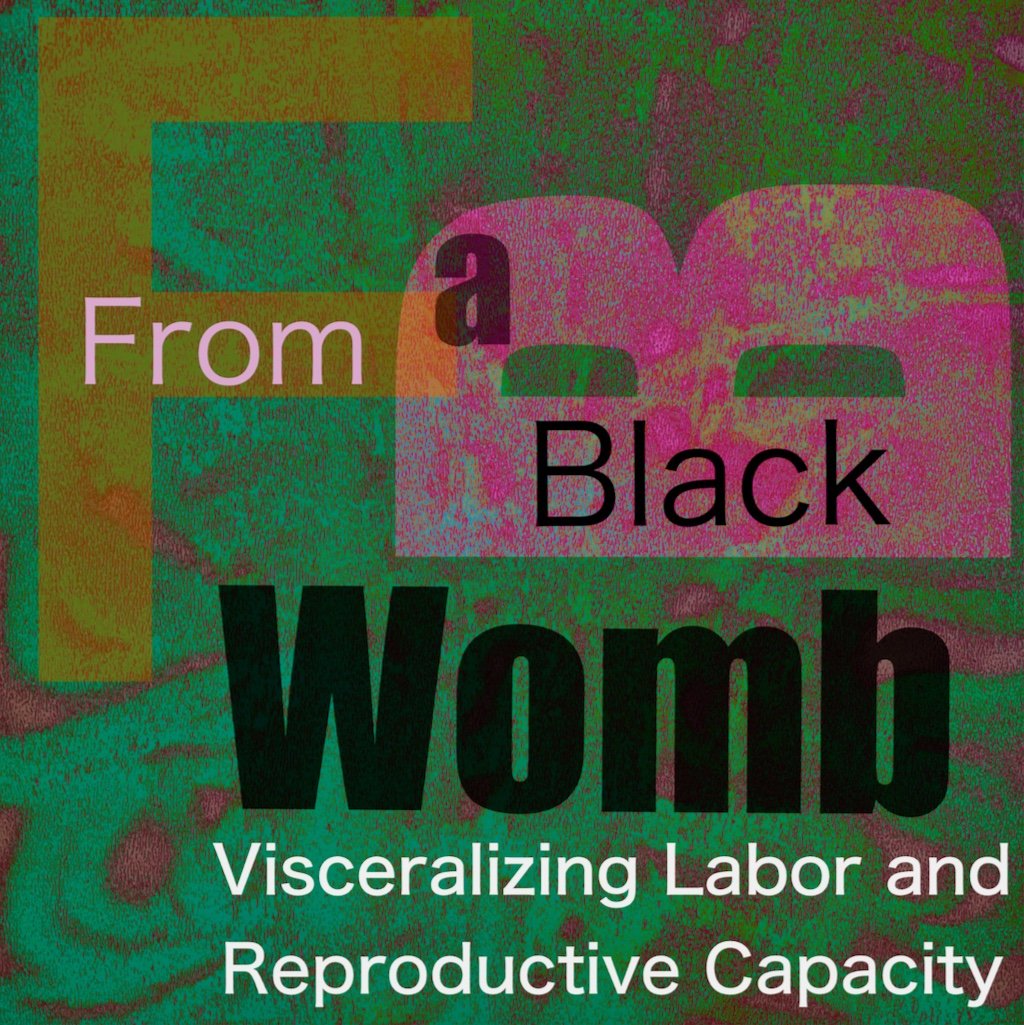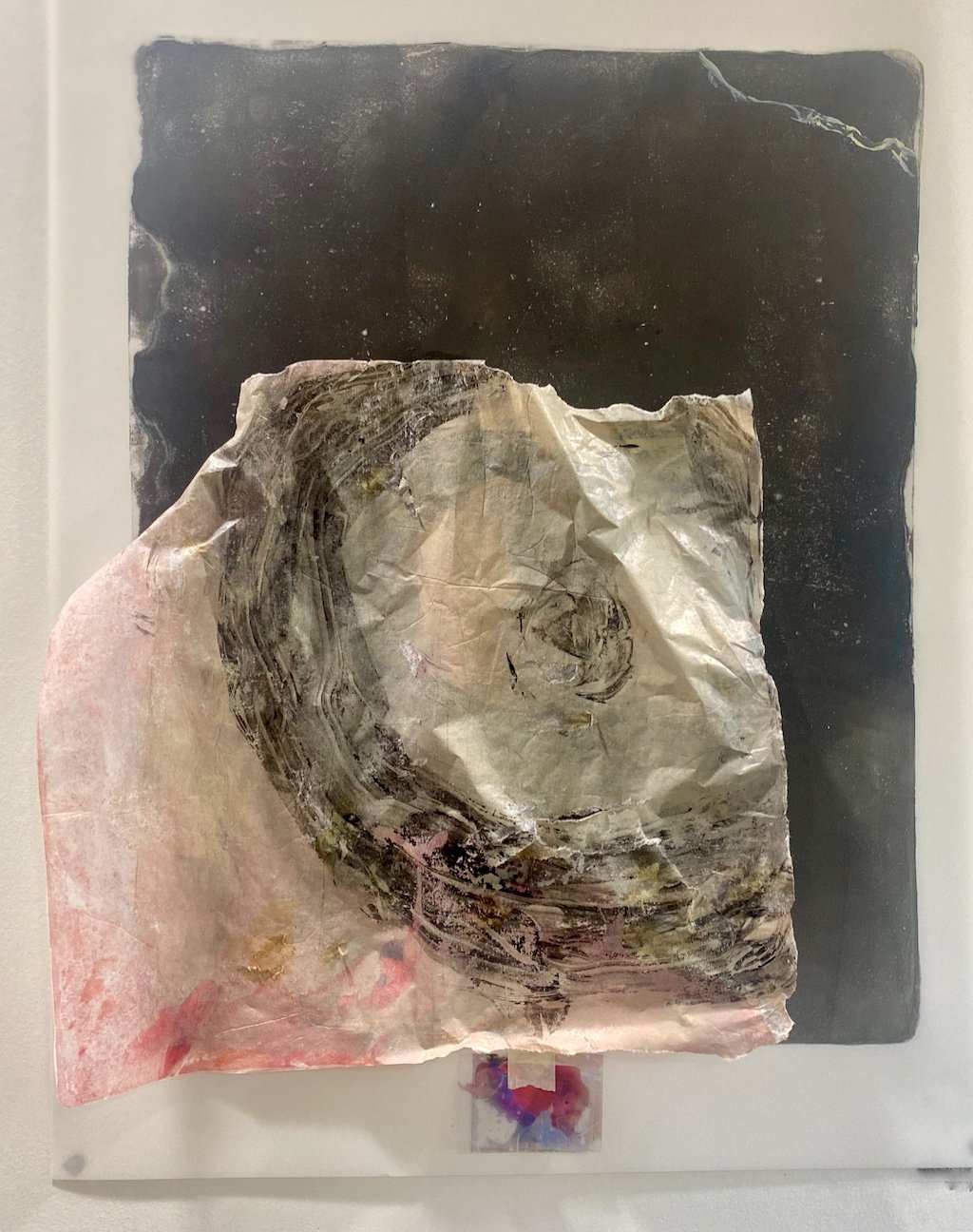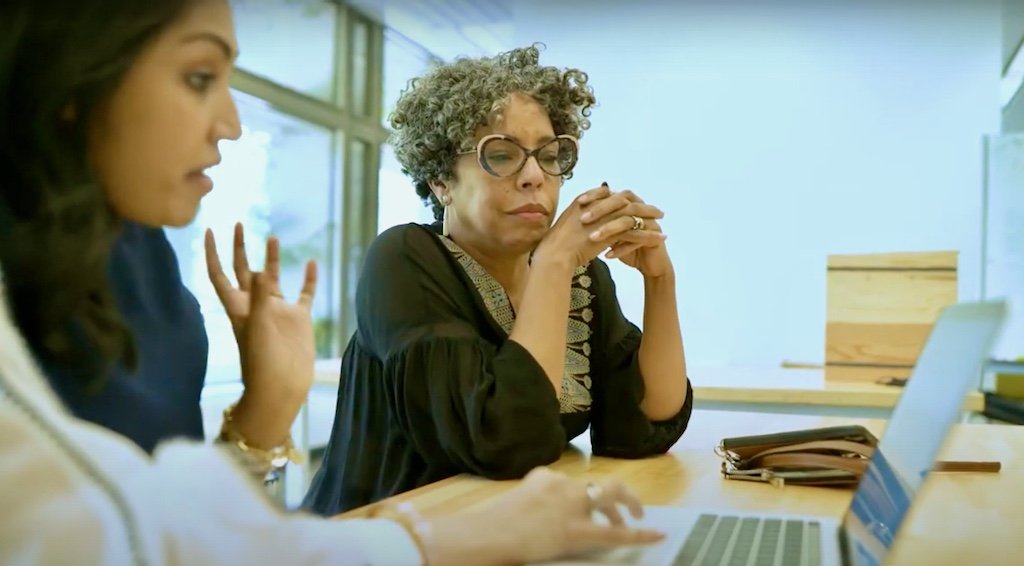We need to talk about Black women’s reproductive labor. Loudly. In intimate whispers. Visually. Among all kinds of people and across the intersections of real life, healthcare, research and policy. The embodied knowledge of women navigating reproductive health must be valued and voiced into dynamic, multivalent living archives. This humanization can be one of many needed approaches to address how and why Black mothers are three times more likely to die in childbirth than their white counterparts. We can do better than the post-trauma infographic for deeply engaging what it means to face the harshest impacts of preeclampsia, uterine disorders, preterm labor and low birthweight babies. We can work to make women feel seen, support them through difficulty and honor them. For example, staying in dialogue about challenges faced by public figures, especially our champions like Tori Bowie, Allyson Felix and Serena Williams, is an important way to advocate for change.
Kyrin Hobson is a Chicago-based visual artist advancing interdisciplinary projects to humanize how we talk about Black reproductive health equity. This project is supported by the Northwestern University Women’s Center.
From a Black Womb
Interdisciplinary artist Kyrin Hobson and her collaborators from fields of visual art, health equity research and data science anthropology propose new methods of seeing, processing and responding to trauma and survival related to birthing bodies. It is an essential feminist practice to consider women’s histories (remembered, imagined or evoked during conversation). From A Black Womb: Visceralizing Labor and Reproductive Capacity explores how Black women conceive of their gynecological and reproductive experiences. It deploys knowledge shared among Afro-descended women to create a living visual archive. Interviews illuminate the stories, self concepts and memories of women in the most intimate sectors of their lived and generational experiences. The interviews become source material for the artist’s paintings, digital works and installations. In doing this, the artist uses black modes of expression and cultural production to integrate discourses of visual art, advocacy and science in innovative ways. Operating critically within and beyond art contexts, the project pushes boundaries of canonical legacies of painting, its capacities, place and purpose. Rather than just producing works, the artist advocates for the wholeness and rights to bodily autonomy of women, creating reproducible strategies for addressing real problems.
In the artist’s studio, the project combines discursive methods with kinesthetic empathy–the replication of movement captured during recorded interviews and translated into gestural marks in mixed-media works on paper. For example, each painting in the current series begins with a gestural imprint in which the artist uses her own body to mirror gestures of her interviewees. These movement and speech-based forms introduce the artist as a medium, transforming the interview source material into evocative landscapes of interiority and shared experience. Symbols and colors carry and combine truths that surface as the stories and insights of women intermingle. This approach excavates imagery and haptic responses to ways we think about birth and progeny. The work creates a visual vocabulary of abstracted gestural and symbolic imagery that stands as an archive of life experiences created by exchange.
The artist in her studio
A Closer Look:
This detail view showcases the artist’s use of movement that responds to the speaker and their ideas. A hybrid fetal form levitates in indeterminate space, combining sensations of movement with sight. The figuration of the unknown brings up dialogue about the fear and confusion that often accompany women’s health challenges.
Falling Creature, 2024, mixed media
Beyond Age 11 and Until Now, 2024, mixed media on yupo
A visualization of trauma and perseverance, this pairing considers multiple cycles of early pregnancy revealed in interviews. Their aftereffects, perhaps bound up and compartmentalized, evoke a firmly closed shape around youth. A shape reflected and re-cast by women’s abilities to live through layers of experience.
Night Float, 2023, oil on linen
Night Float is a reductive painting–the image having been wiped and scraped from the paint layer. It speaks of sensation and loss. In it the artist recalls an interview with a mother sharing how she could physically feel any threat to her son as if a force was tugging at her womb. Even in the dark of night as her teen was out in their neighborhood.
The artist in conversation with Dr. Joy West, OB-GYN.
Recorded interactions with birth workers were the initial data set for this emerging mode of visual art practice.
Interview still from Birthing a New Vision: Artist and Ethnographer Conversions on Data, Art and Maternal Mortality.
Acknowledgments
The current articulation of the project builds upon work supported by the Gray Center for Arts and Inquiry and published in Portable Gray (Uterus Mined) and the Arts Science and Cultures Initiative of the University of Chicago (Birthing a New Vision: Artist as Ethnographer and Applied Anthropology as Creative Practice). The generous support of Northwestern University's Women’s Center has been instrumental for envisioning the project’s sustainable continuation. The artist recognizes the work of a dynamic group of scholars, students, midwives, doctors, family members and everyday women who have contributed their stories to bring the social practice and artworks into being.















